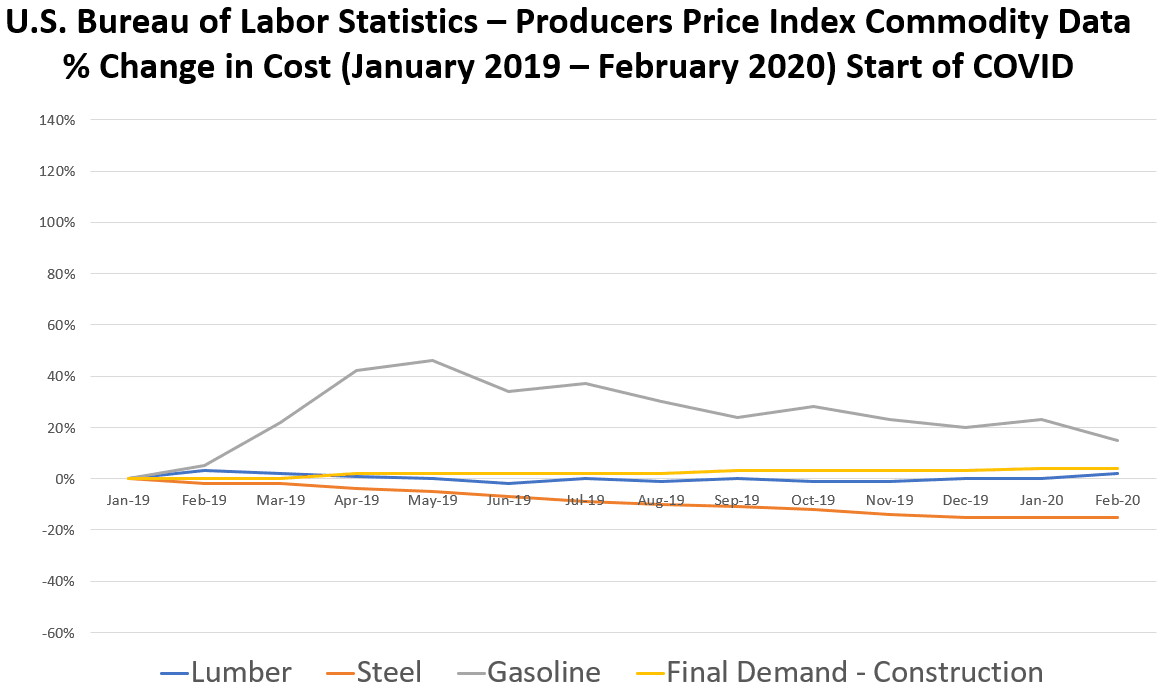The continuing aftershocks of COVID-19 and their effect on business — particularly in construction and property valuations — is resulting in higher construction costs. Supply chains have been disrupted and the cost for materials in certain areas have skyrocketed. While we can’t predict with any level of certainty what will happen next, it is vital to keep up with property valuation and valuation-updating efforts to help mitigate these shifts with the information we currently have.
Demand surge has created a dramatic increase in the cost to repair or replace damaged property. Unlike past catastrophic events which caused regional demand surge pressures, COVID-19 is global in nature. Supply chains have been disrupted around the world, creating domino-like effects on availability and the price of materials. Here are some specific results we’re seeing.
Before COVID hit the price of lumber, steel, and gasoline and the cost of construction were on a more even course…

But across both 2020 and 2021, there have been dramatic rising fluctuations of pricing in all areas, affecting property values. (Note: The “Final Demand – Construction” index listed above is a weighted average of indexes for construction for private capital investment and construction for government. Those indices, in turn, comprise different proportions of indexes that measure the cost of construction for five types of new nonresidential buildings: warehouse, school, office, industrial, and health care buildings.)

Here at Centurisk, we consider this information when making our property value estimates. Historically, we’ve seen other larger-than-typical increases and even decreases for trend factors. One example of this was in 2008, right after Hurricane Katrina and the burst of the housing market bubble. At that time, we talked to our customers about the fluctuations we were seeing, and we gave them some options regarding their property values. They could choose to either:
- Apply the abnormal trend factors now and then adjust up or down in the future
- Or apply a slightly higher than normal increase and then wait to see what happens in the future
Option Two can be a viable choice because, here at Centurisk, our experience has shown us that when we see these peaks and valleys, they almost always level themselves out eventually. Costs will likely still be higher than they were before the trend, but potentially not as drastic. For our customers who chose this option in the past, almost all of them didn’t need to apply a negative trend factor to their values in the years that followed.
Wild Cost Fluctuations Can Be Harnessed
Though tumultuous costs for lumber, steel, gasoline and construction may seem like they’ll buffet your property values and dramatically shift your property insurance coverage, you can help mitigate their effects. Judicious application of trending, a watchful eye on change, and a willingness to adjust over time can help ensure you plan for today yet aren’t playing catch-up in the future.
Want to see how Centurisk can help keep you trend values as costs shift? Contact us today!